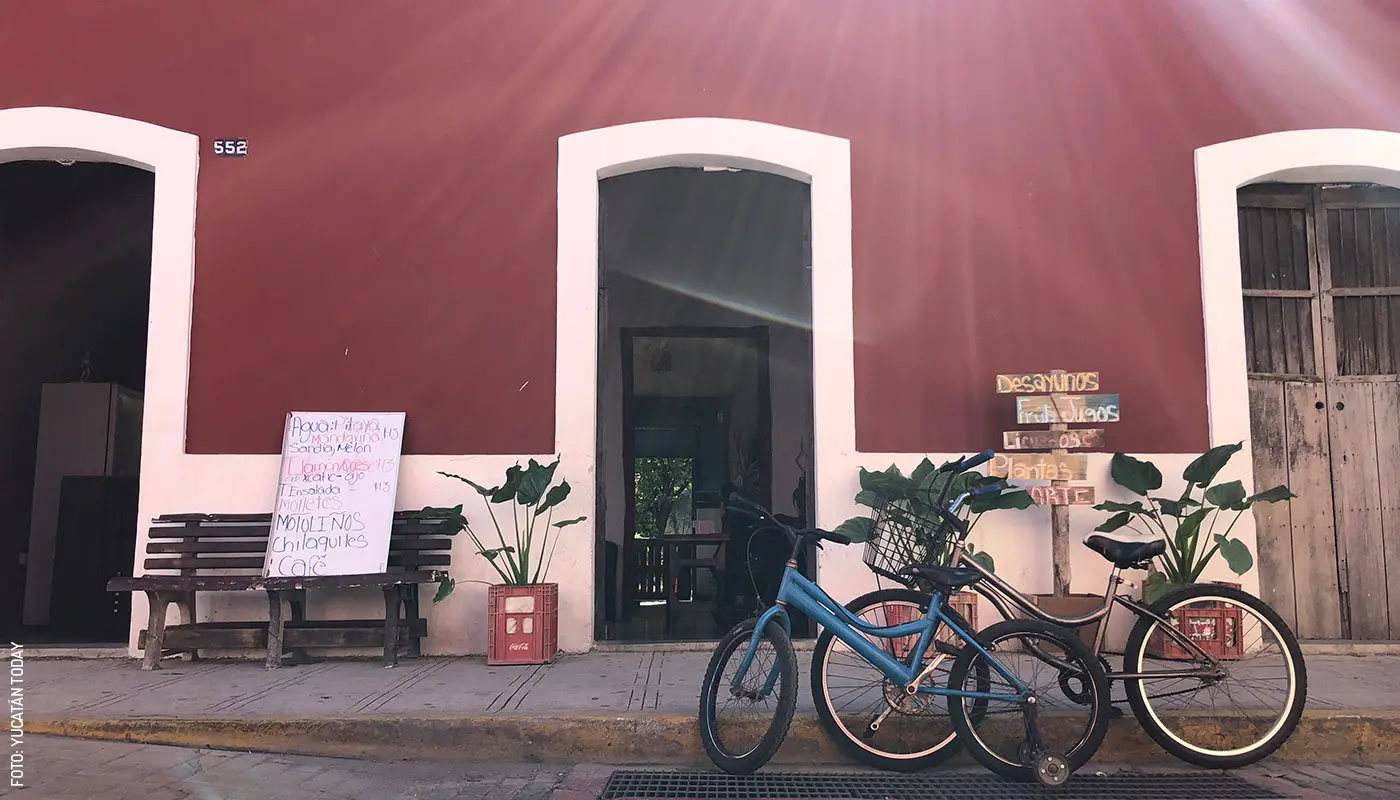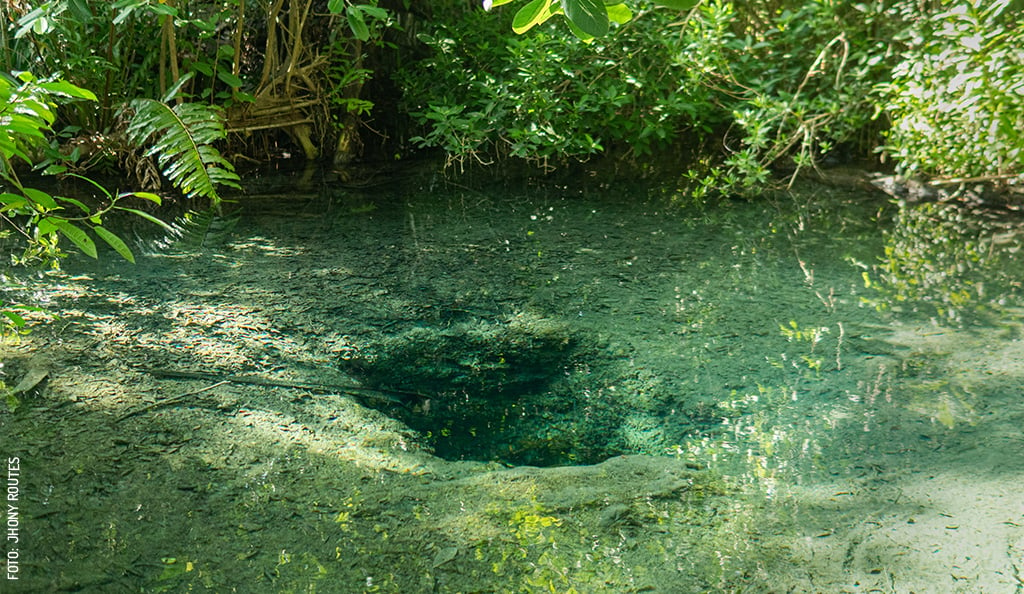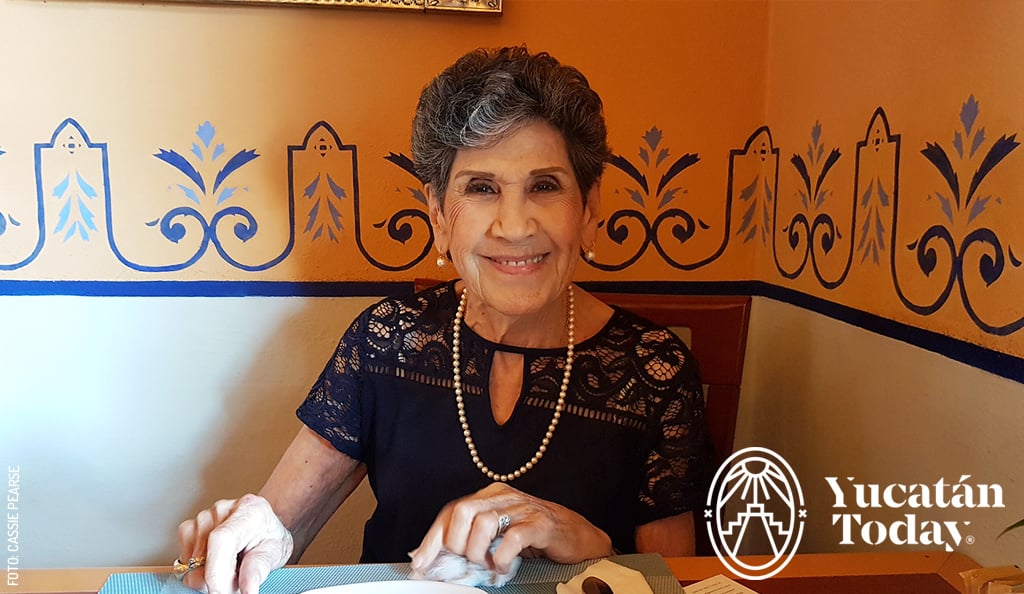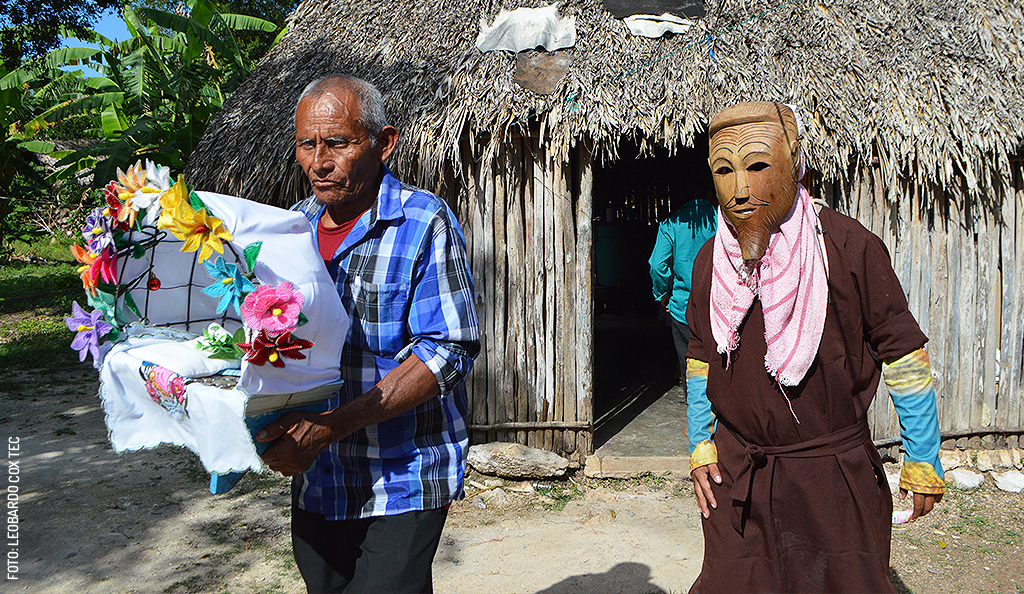- Home
- Living in Yucatan
- Real estate
Mérida’s Barrios and Neighborhoods
In Mérida, Yucatán, Centro is full of things to see, do, and enjoy, but so are its Barrios and Colonias (neighborhoods). We take you on a tour!

Your guide to explore Mérida’s Barrios and Neighborhoods
Mérida Centro and its Barrios
The area we currently know as Mérida’s “Centro”, the city’s historical center, covers about 10 square kilometers (roughly four square miles); it’s one of the largest in México, and its history goes back well into Colonial times. The city’s center back then was, basically, the Plaza Grande (main square), and everything around it constituted the city’s Barrios or neighborhoods, each of them laid out around a smaller church.
So now we consider the Centro to be divided into nine Barrios, very different in name and concept to the Colonias (another Spanish word that also translates into neighborhoods, sorry) around Centro that make up the city today; these began to be settled in the 20th century, and continue to do so today.
The area comprised by three of the Barrios in Mérida’s Centro (La Ermita, San Sebastián, and Xcalachén) recently became Yucatán’s first Barrio Mágico—Barrios Mágicos (or Magical Neighborhoods) is a federal government program that lists unique neighborhoods in different cities. Be it their impressive architecture, their historical monuments, their lively everyday bustle, their varied food offerings, or cultural richness, there are plenty of reasons to love the Barrios that keep tradition alive in our city. Here’s a guide to explore them.
The very center of Mérida: Plaza Grande and its surroundings
To the north: The Yucatán Governor’s Palace
On the north side of Plaza Grande, you will find the “Palacio de Gobierno” (Governor’s or Government Palace), where the executive branch of our state government is located. Don’t miss out on a stroll inside to check out the murals of the distinguished painter Fernando Castro Pacheco; they’re a series that chronicles a few interesting passages of the history of Yucatán. Here’s a guide to make the most of your visit to Yucatán’s Palacio de Gobierno and its murals.
To the east: Catedral de San Ildefonso (Cathedral of St. Ildefonsus)
Mérida’s Catedral de San Ildefonso, on the east side of the plaza, is the oldest church to be built on the American mainland (considering both North and South America). Its construction, made from the stones taken from the pyramids of the ancient city of T’hó, was begun in 1561 and only the first phase was completed in 1598. Here you will see the most important religious icon of Mérida: a replica of the Cristo de las Ampollas (Christ of the Blisters). The original, crafted in the early 17th century, got its name after it survived a fire that consumed its home church of Ichmul in 1634. Blackened and blistered, it was deemed miraculous and became one of Yucatán’s most revered figures, and brought to the Mérida Cathedral in 1645. In 1915, however, the anticlerical push by governor Salvador Alvarado wiped out most of the Cathedral’s priceless religious art, and the original Christ of the Blisters was lost.
To the south: la Casa de Montejo
South of Plaza Grande you’ll see a building whose façade immediately stands out. La Casa de Montejo (Montejo’s house), now styled as Casa Montejo, is the oldest in Yucatán, and considered National Heritage. It was the home of Francisco de Montejo “El Adelantado,” founder of the city. It’s important to note that, while the construction itself is well preserved, its furnishing is not colonial; you’ll find it decorated with 19th- and 20th-century items, as well as temporary exhibits spanning different topics. Admission is usually free.
To the west: Palacio Municipal (City Hall)
Another one of the city’s first buildings to still stand is the Municipal Palace or City Hall, on Plaza Grande’s west. Here you’ll find murals depicting the Maya worldview, and enter the city council chamber on the second floor. On the outside of the building you can see the national crest, and on the tower, a clock and Mérida’s city crest.
Mérida’s Central Barrios
The Barrios comprise the area of Mérida’s Centro that goes beyond Plaza Grande and the blocks around it. As mentioned above, these (with the exception of Xcalachén) were laid out around a church (and its corresponding square); for clarity’s sake, each Barrio is listed with the location of its church.
Barrio de Santa Lucía (Calle 60 x 55)
Nowadays, Santa Lucía is one of Mérida’s most cosmopolitan areas, but for decades it’s been lauded for its history as one of the city’s oldest neighborhoods. Santa Lucía’s main attractions include the church and the park (both located on Calle 60 x 55). This area’s beginnings go way back to 1565, just a few years after the founding of the city of Mérida. Would you like to find out more? Here’s an article devoted to Mérida’s Barrio de Santa Lucía.
Barrio de Santa Ana (Calle 60 x 45)
Just a block away from Remate de Paseo de Montejo, this quiet Barrio includes the square next to the church where you’ll usually find artistic performances and artisanal fairs. Its church dates back to 1729, and you can visit it by day, or see it beautifully lit by night. To its side, you’ll find the Santa Ana market, a great place for local snacks and food all day long.
In this area of Centro you’ll also find the beginning (or end, depending on how you look at it) of Mérida’s Culinary Corridor and Parque de La Plancha, Mérida’s Central Park.
When you visit Barrio de Santa Ana, don’t miss:
- Bars and restaurants for all tastes.
- Regional clothes and handcraft shops
- Art galleries
Barrio de Santiago (Calle 72 x 59)
This is a Barrio with personality to boot. Here, you can enjoy music, food, and a very joyful atmosphere. Don’t forget to visit the church and market, where you can try Marquesitas, frozen treats, and regional food by morning, night, and afternoon.
When you visit Barrio de Santiago, don’t miss:
- The busy market life in the morning, featuring plenty of meat, fruits, and vegetables, in addition to great places for a local breakfast.
- At night, Panuchos, ice cream, and Marquesitas.
- Every Tuesday starting at 8:30 pm, you can dance (or watch the dancers) to the live bands performing for the Remembranzas Musicales program.
Barrio de La Mejorada (Calle 50 x 59)
Here you can visit the church of Our Lady of Mount Carmel (Nuestra Señora del Carmen), as well as a former 17th-century convent that now houses the state university’s School of Architecture; right across the street, you’ll find the park and a monument to Los Niños Héroes de Chapultepec, young cadets who died defending Mexico City during the Mexican–American War.
When you visit Barrio de la Mejorada, don’t miss:
- The Yucatecan Song Museum (Museo de la Canción Yucateca).
- The Folk Art Museum (Museo de Arte Popular).
- The city’s former train station, now the Yucatán University of Arts (UNAY).
Barrio de San Cristóbal (Calle 50 x 69)
Thousands of people come punctually every year on December 12, to the Diocesan Sanctuary of the Virgin of Guadalupe in the San Cristobal neighborhood in Mérida. You will see constant pilgrimages and the arrival of Antorchistas. In historical terms, this church was built in the 18th century, including the shell on its façade, unique in Mérida.
When you visit Barrio de San Cristóbal, don’t miss:
- The Lucas de Gálvez and San Benito markets.
Barrio de San Juan (Calle 64 x 67-A)
The church this Barrio sits around was built around 1770; the square across from it was established as such a century later, in 1883. It was from then on that the beautification of the area began. The “La Negrita” fountain we can see to this day, for example, was brought from Paris in the early 20th century. This Barrio is where you’ll find most of the public transportation vans going from Mérida to most towns in the state.
When you visit Barrio de San Juan, don’t miss:
- The San Juan arch
- The monument to Benito Juárez, built in 1909.
- The “La Negrita” fountain.
Today’s Tip: Remember that the area comprised between San Sebastián, La Ermita, and Xcalachén constitutes Yucatán’s first Barrio Mágico or Magical Neighborhood. Take a more in-depth look at it through our article The Magic of Daily Life in Mérida’s New Magical Neighborhood.
Barrio de San Sebastián (Calle 70 x 75)
One of the oldest, most traditional Barrios in Mérida, it is still essentially a residential area. It features a very diverse market, and a church devoted to Our Lady of the Assumption (La Virgen de la Asunción), one of the most beautiful in the city. Every year, in August, there are pilgrimages and regional parades in honor of the Patron Saint. Homes in the neighborhood will fill your eyes with contrasting colors. Plus, it offers amazing regional cuisine options, as it is the birthplace of Panuchos and home of the Festival del Pib, a Yucatecan delicacy made for Janal Pixan (our Día de Muertos).
When you visit Barrio de San Sebastián, don’t miss:
- Panuchos by the park
- The softball field
Barrio de La Ermita (Calle 66 x 79)
In Spanish, an Ermita (hermitage) refers to a somewhat remote religious temple, where there aren’t regular services as it is usually on the outskirts of a community. This one is devoted to Saint Elizabeth (Santa Isabel), the mother of St. John the Baptist, and it is the heart of what may be the most singular Barrio of them all. The square across the church features a lovely gazebo, and a garden with benches and recreational spaces, surrounded by colonial-style homes. The stone-lined streets and their peculiar layout, basically in diagonal in a city defined by its squares, evoke the history of the Ermita as being beyond the city limits, the last stop for travelers taking the Camino Real (royal road) to Campeche.
When you visit Barrio de La Ermita, don’t miss:
- The garden by the church
- Marquesitas at the park
Barrio de Xcalachén (Calle 93 x 64)
The sole Barrio in Mérida’s Centro that isn’t laid out around a church is Xcalachén. This neighborhood, which remains mainly residential to this day, is famous for its colorful, artsy graffiti, but especially because of a regional delicacy that’s the area’s specialty: Chicharra.
When you visit Barrio de Xcalachén, don’t miss:
- Outstanding street art by local graffiti artists
- The Monument to Mexican superstar Pedro Infante
- Mérida’s General Cemetery
More of Mérida’s noteworthy neighborhoods and areas
North Mérida
The tropical climate, laid-back lifestyle, and safe streets of Mérida have made it one of the fastest-growing cities in México. The Centro Histórico will always be the place for museums, galleries, cultural events, and beautiful colonial architecture. However, there has been significant growth in the suburbs; among the most important, in the north of Mérida.
This is especially visible as areas that used to be considered independent villages, such as Dzityá, Temozón Norte, Cholul, and Conkal, are now part of the city. This means there is a wide array of new real estate offerings in the area, including apartments, condos, houses and townhouses with all sorts of amenities; they all boast their closeness to the most important educational, shopping and healthcare centers, in addition to offering quicker access to the state’s northern shores, from Chuburná Puerto to Dzilam de Bravo and even as far as El Cuyo.
In north Mérida, just like in Centro, you can definitely find all kinds of national and international businesses, including a wide range of restaurants, specialized stores, shopping malls, and many other products and services that allow residents to have everything they need, close to home. However, it should be noted that an important difference between these areas is pedestrian accessibility: the north has mostly been designed to be experienced by car: distances are longer, and public transportation options are limited.
Still, north Mérida stands out for the many entertainment options it offers within luxury shopping malls. These offer (in addition to stores, restaurants, and supermarkets), events geared at children and pets, entertainment options ranging from multiplexes to concert halls, and even activities like ziplining, kneeboarding, or ice skating (in Yucatán? Who’d have thought?).
Mérida has also become a regional hub for health-related services for México’s southeast. There are excellent hospitals in the north part of the city such as Star Médica, Hospital Regional de Alta Especialidad, and El Faro del Mayab.
West of Centro: García Ginerés
One of Mérida’s best known and most visited Colonias (neighborhoods) is, without a doubt, García Ginerés. While today we consider it to be Centro-adjacent, in the early 20th century it was considered to be way too far from the city; as a matter of fact, its main promoter, a Catalonian Spaniard by the name of Joaquín García Ginerés, had previously failed in his efforts to develop the neighboring village of Itzimná as a Mérida suburb. The difference between these two projects was that San Cosme, as García Ginerés was known back then, was on the way to other villages such as Hunucmá, Chuburná, and Caucel, and soon had plenty of amenities to offer, including a silent movie theater and an artificial lake.
Soon, San Cosme was inhabited by plenty of families looking for country living. To this day, it’s a very peaceful residential area. Home to longstanding schools, modern hospitals, and small businesses, its limits are defined by the Reforma and Cupules avenues, with Avenida Colón (which leads to Paseo de Montejo) running through it. However, what attracts Meridanos (and visitors) from all over to García Ginerés are two of its parks: Parque de las Américas and Parque de la Ibérica.
Parque y Centro Cultural La Ibérica
Located on Calle 37 x 74, La Ibérica began its life as a hospital in 1918, and served as such for half a century; spanning two hectares, its cutting-edge facilities were the perfect location to recover from any ailment. Since 1998, La Ibérica serves as a state-government-run cultural center that offers a seemingly endless list of activities for seniors, such as Tai Chi, dancing, music, and theater, to name a few. Just researching their full catalog of morning and afternoon activities (and signing up for them) is well worth the visit, but you’ll find that its tree-covered pathways, halls full of history, and a lovely pond where birds hang out definitely sweeten the attraction. Don’t miss out on the details of its imposing masonry archway at the entrance: it boasts, in addition to its name, reliefs of the Mérida and Mexico coats of arms at the sides, with the one for Castilla y León at the center. That’s because the hospital was originally founded by the local chapter of the Sociedad de Beneficencia Española (Spanish Welfare Society).
García Ginerés: Parque de las Américas
Parque de las Américas has been called the most beautiful in Yucatán, and it’s easy to see why. The park and all of its elements are jewels of the Neo-Maya architectural style, in addition to being home to many different spaces and state to all kinds of activities; a children’s park and playground, a library, several fountains and monuments, among other elements, are all housed within the four blocks the park comprises.
At the intersection of Avenida Colón and Calle 20 you’ll be right in the middle of the park. If you look northeast, you’ll see a kindergarten in the middle of a playground with plenty of activities for children of all ages; in the afternoons, you’ll have to watch out for the “traffic” caused by the many bicycles, tricycles, and electric cars available for rent. Northwest, la Concha Acústica (bandshell), an open, public forum where the most art-oriented among you can feel like bonafide entertainers, when not in use for an endless number of cultural performances.
To the southeast, you’ll find one of Mérida’s most iconic sights, perhaps only after the Monumento a la Patria: the Maya fountain. It’s monumental not only in size, but as an actual homage to some of the most distinctive elements of pre-Hispanic Maya constructions. The most striking, undoubtedly, are the representations of Kukulkán (the feathered serpent), corresponding to the Temple of the Warriors in Chichén Itzá, or, behind them, the stairway at the Temple of the Magician at Uxmal. The most subtle, on the other hand, may be those referencing the traditional Maya houses, which are built with thin, straight sticks laid out vertically.
Finally, to the southwest, there’s the Centro Cultural José Martí, which also offers plenty of activities, many of which are geared towards children’s creative writing abilities. This section also includes monuments to several of Latin America’s founding fathers, and columns commemorating each country in the continent. See how many you can spot!
No park in Yucatán is ever missing at least one food cart where you can find snacks like Marquesitas, Elotes, or hot dogs. Fitting its massive size, Parque de las Américas is practically Mérida’s street food mecca. The variety is truly extensive, and some of the carts are city legends; don’t be surprised if you see lines of 10 to 15 people at some places, while others are relatively quiet. Is there a difference between them? Some say there is, some say there isn’t. You’ll have to check them out yourself and find out.
East Mérida
Mérida’s expansion began towards the East; specifically, with the Chuminópolis neighborhood. This, Mérida’s first suburban neighborhood, owes its peculiar name to having been developed by a Hacienda-owner named José Domingo Sosa: in México, people called “Domingo” are nicknamed “Chumín.”
Being the most historical area in Mérida, after Centro, eastern Mérida offers plenty to see and enjoy. Here are some points of interest in this area, which, for the purposes of this text, is delimited by Av. Yucatán to the north and the Kukulcán Sports Complex to the south.
Parque de la Alemán
This park gets its name from the neighborhood it is located in, dedicated to former Mexican president Miguel Alemán. Within the same area, there is a residential development called San Miguel (St. Michael), which has led some people to refer to the neighborhood as ‘San Miguel Alemán’, even though, to date, no former Mexican president has been awarded sainthood by the Vatican.
Although it is one of the largest parks in the city, Parque de la Alemán is far from being the largest in this area. Nevertheless, it is heavily frequented due to the wide range of activities and spaces it offers. In the mornings, a significant part of its activity is related to the market located a few meters away, where you can find fruits and vegetables, meat, flowers, local snacks, and various shops. In the afternoon, it is equally easy to come across skaters performing tricks, people taking salsa lessons, as well as ubiquitous ice cream carts, corn vendors, and Marquesita stalls. There are also dog clubs, amusement rides, electric vehicles for children, walkers, runners, and much more.
Location: https://goo.gl/maps/JyqZd6sGN3L4czE19
Parque Recreativo del Oriente
Now, Parque Recreativo del Oriente is definitely the largest in the area. Spanning almost 11 hectares, it is a wonderful place to spend a weekend afternoon or early morning. On Saturdays and Sundays, it’s a dog-lover’s paradise, as it’s the site of at least two canine obedience and agility clubs. You’ll see dogs of all ages, sizes, and breeds, all lined up to weave through poles, jump through tires, scale up ramps, and other tricky-looking obstacles; because the park covers such a large expanse, you’ll see dozens of groups working at the same time, each with a small number of dogs and owners learning different skills according to their level.
In addition to the many, many dogs, you’ll see families, boy and girl scouts, joggers, cyclists, martial artists, and even a picnic party or two. El Parque, as it’s known in the neighborhood, is also home to the Chen Ho archaeological site, making it one of 15 archaeological parks in Mérida; the pyramid bases are open to the public and climbing is allowed. On Tuesday, Thursday, Saturday, and Sunday evenings, the park’s parking area also houses a Tianguis, a market where you can find anything between a traditional Marquesita and a several-bushel laundry basket.
Location: https://goo.gl/maps/DcBQacJmbnDDRE1EA
Kukulcán Sports Complex
The Kukulcán Sports Complex is the largest in southeastern México, spanning 27.9 hectares. In addition to multiple tennis courts, frontón (a ball game), volleyball and basketball courts, baseball and soccer fields, the complex features a swimming pool with a diving well and multipurpose halls. It also includes the Carlos Iturralde Stadium (for soccer), Kukulcán Álamo Stadium (home of the two-time champions of the Mexican Baseball League, Leones de Yucatán), and the Zamná Polyforum, a covered arena with a capacity of over 6,000 spectators.
Location: https://goo.gl/maps/knu2cgPUro5rppgcA
Acuaparque
Last, but not least, another park located in the eastern part of Mérida is Acuaparque, in the Vergel neighborhood. As its name suggests, Mérida’s Acuaparque is home to a small lake or pond that is itself home to dozens of species. The terrain boasts lush vegetation, plus slopes, descents, and large enough spaces for exercise.
Thanks to its vegetation and wildlife, the park is used as a venue for sighting various species, especially birds. It is an excellent place if you want to get away from the hustle and bustle of the city and connect with nature.
It is one of the most important parks in the area, and access is completely free. In addition to being a great place to take your furry friends, it has a children’s area, restrooms, and also a space with tables, ideal for family picnics. Additionally, it is under surveillance most of the time.
Fun fact: in the past, boating was allowed on the lake, but it has been under maintenance. Hopefully, this activity can be resumed soon.
Location: https://goo.gl/maps/b9WsazUSqnZo3fE46
Kanasín
First and foremost, it’s important to note that Kanasín is not a neighborhood of Mérida, but an entirely different municipality. Still, its proximity and relevance to Mérida make it impossible not to bring up in this section. Kanasín is famous for its cuisine, and you have probably heard about “panuchos de Kanasín,” which you can find every day at various stalls in the downtown area or inside its famous market.
In the mornings, there is a lot of activity in the downtown area. Vendors of all kinds offer their products, and it is well known that, at the Kanasín market, you can find fruits, vegetables, and high-quality food at very affordable prices.
Recently, they have renovated their main square and other nearby parks, so any night of the week you can find food stalls, Marquesitas, chips, churros, and more. Their festivals and celebrations become grand spectacles and usually last for several days.
Location: https://goo.gl/maps/mFZNDP39Mf61bThn6
Artículos relacionados

Petén Culú: el paraíso escondido del ecoturismo en Sisal

Señora Homa, Hotel Casa San Ángel







